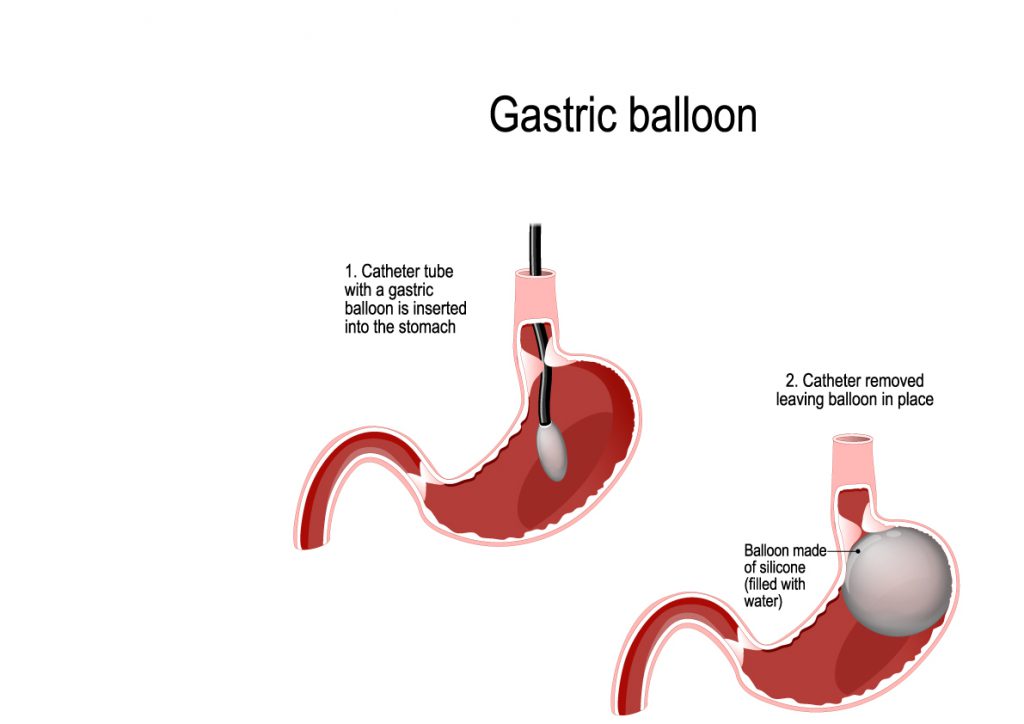What are bariatric surgeries?
These are the most popular surgeries for the treatment of obesity and obesity, and there are many types of them
The first type is gastric sleeve
It is the most famous of them in the treatment of obesity or overweight.
And through it, 70-80% of the stomach is cut until it becomes a banana, so the patient feels full as soon as he eats a little food.
What about laparoscopic sleeve gastrectomy?
Laparoscopic sleeve gastrectomy is a minimally invasive gastric sleeve procedure, the goal of which is to lose excess weight and get rid of obesity.


How is the surgery done?
There are several conditions for a gastric sleeve:
• Age between 18 to 65 years
• A healthy BMI is over 35.
What are the methods of the surgery?
• Modified sleeve gastrectomy, which is the normal sleeve using a silicone ring that prevents any expansion in the size of the stomach from eating.
• Bikini sleeve, which is the normal sleeve, but through small openings in the bikini area to hide the operation wounds and traces.
Accurate sleeve gastrectomy is the normal sleeve gastrectomy, but by using very precise tools, and therefore the wounds of that surgery will not be visible to the eye.


The second type of surgery is bypass surgery
This operation is performed laparoscopically through small incisions, the length of which does not exceed 2 cm.
These operations are suitable for some patients with obesity and diabetes, and they have some conditions:
• Has a BMI of more than 32
For patients with type 2 diabetes.
Hiatal hernia and GERD patients
• They have previously performed a sleeve gastrectomy or bypass and did not reach the ideal weight
• Reducing the size of the stomach and reducing the amount of sugars that can be eaten, thus maintaining a normal blood sugar level.
• Diversion of the gastric bypass and the path of food absorption reduce the absorption of sugars in particular, which makes type II diabetics able to get rid of the medicines that help lower the sugar rate.
• Getting rid of obesity through this surgery helps the pancreas to do its job better and avoid high blood sugar.
• Through gastric bypass surgery, 95% of type 2 diabetes patients are cured.
The third type is gastric bypass
After gastric bypass surgery, the person loses about 85% of the volume of the stomach, which reduces his ability to eat. The different types of food are eaten after the four-week period.

There are some advantages of obesity surgery
• It doesn’t take long
• It is done laparoscopically and through small incisions
• The patient does not need to stay in the hospital for more than one night after the operation
• Does not require a long recovery period
• Do not leave any surgical traces as the openings are closed in a cosmetic way
• Eliminates 70% of excess weight during the first year of the operation
• Eliminate type II diabetes.
• Helps improve the level of type 1 diabetes
What are the risks of bariatric surgery?
Bariatric surgery has some risks that the patient may be exposed to:
• The possibility of weight gains, in case the patient did not comply with the post-operative instructions.
• The possibility of bleeding, which is rare.
• The possibility of gastric leakage as a result of the stomach wall not healing properly after the operation. A leak test is done after the sleeve gastrectomy and the gastric bypass operation to ensure that there is no leakage.
What are the symptoms of gastric leakage?
1- The most important symptom that may indicate a leak is pain in the left shoulder.
2-Fever and high body temperature.
3 – Frequent feeling of vomiting and nausea.
4- Recurrent stomach pain.
5- An increase in heart rate with a decrease in blood pressure.
6- Leakage occurs from the wound.
7- Decreased rate of urination.
There are some procedures to be taken before the operation:
• Conducting laboratory tests and analyzes.
• Quit smoking for at least two weeks before the surgery.
• Give your full medical history to your doctor so that he or she can take into account all your needs.
• Inform your doctor about taking any medications before the operation, especially blood thinners, as they may have an effect during surgery.
• In the event that you are a diabetic, the dose of diabetes medications is reviewed with the doctor before the surgery.
• Fasting 12 hours before surgery.
There are some post-surgery instructions:
• Follow the special diet for obesity surgery.
• Taking vitamins or nutritional supplements for a period of no less than two years after bariatric surgery.
• Drink enough water while walking.
• Performing laboratory tests and blood tests in the first months after surgery.
